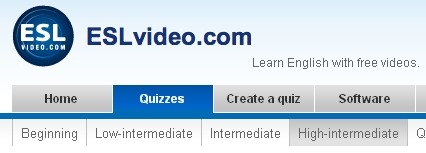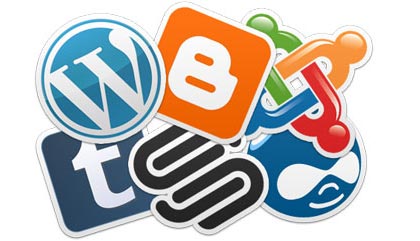Introduction
Learning
a language is not just learning a set of words or learn a structure, is not
like learning Math or Chemistry where you learn a set of formulas and you just
need to apply the numbers in order to get a result. Learning a language is more
complex than just learning a formula, learning a language involves a process
where we apply our eyes, ears, mouth in order to understand the information
that we are getting, but also expressing our ideas in an oral or written
way. As whole, learning a language, like
in the case of English, is a rather quite complex process because we are
learning a language, a tool for us to communicate to others therefore it needs
preparing different aspects such as grammar, writing skills, reading skills and
listening comprehension. Now with the rise of technology we, as teachers, can
improve the whole teaching experience by including Blogs, Wikis, Podcasts and
Web based lessons. Blogs
or Web-blogs are defined by Varlack (2009) as “web logs that are updated on a
regular basis by their author. They can contain information related to a
specific topic. In some cases blogs are used as daily diaries about people's
personal lives, political views, or even as social commentaries. The truth of
the matter is that blogs can be shaped into whatever you, the author, want them
to be”. In the following paper, an English Unit will be created implementing
the use of blogs, this unit is for 7th grade students at the
Instituto Jean Piaget School.
Other researches and
blogs
Regarding
the topic of blogs on ELT, blogs are one of the most used tools on the webs.
However, most of the blogs found on the web regarding ELT are more oriented to
the teaching of grammar, vocabulary or reading. Examples can be seen in the
following pages:
• http://englishforteaching.blogspot.com/
this blog presents activities and resources that teachers can use and implement
in their classrooms, activities like flashcards, games and puzzles.
• http://englishteachermargarita.blogspot.com/
this blog presents unit, class activities, evaluation and assessment activities
that teachers and instructors can implement in their classes. The activities
cover different skills like writing, grammar, vocabulary, reading and
listening.
• http://lusine13.blogspot.com/ this
blog is similar to the previous mentioned, it gives to the teacher different
activities that can be applied to the classroom, improving the different skills
required in ELT.
• http://www.englishblog.com/learning_english/#.U7IhU_mSxps
this blogs provides with lessons and exercises to students or people who wants
to learn English and also provides with activities for teachers to improve the
teaching experience.
Similar
researches about the use of blogs have been carried out, like for example the
one carried out by Fahad Hamad Aljumah in 2012 called Saudi Learner Perceptions
and Attitudes towards the Use of Blogs in Teaching English Writing Course for
EFL Majors at Qassim University which objective were, according to the
researcher, “(1) to investigate students’ attitudes toward the use of blog in
learning writing, and (2) to demonstrate the advantages and disadvantages of
using blog in language learning. A total of 35 Saudi students majoring in
English participated in this study. Data are collected from learners through
questionnaires conducted at the end of the writing course (ENG143) during
spring semester 2009. Responses indicate that students have a favorable
perception towards weblog use in their writing classroom. Findings suggest that
learner-perceived benefits of using blogs included increased interest and
motivation to use English because of interaction with, and feedback from
classmates and teachers. Teaching English Writing Course for EFL Majors at
Qassim University” (Aljumah, 2012). Other research is the one carried by Grami
Mohammad A. Grami in 2012 called Online Collaborative Writing for ESL Learners
Using Blogs and Feedback Checklists which seek to “reports on the experience of
seven Saudi female ESL students who worked collaboratively in an interactive
online writing environment over a period of four weeks. It chronicles their
experiences with online writing tasks, documents their responses to online
feedback, and examines their attempts to cope with different settings and
audiences. It was found that interactive features of weblogs helped establish a
valid peer review culture as an integral part of collaborative writing. The
experience also helped develop critical thinking and ability to identify target
audience. In general, students’ attitudes were positive and participants
exhibited a desire to incorporate similar tasks in upcoming ESL writing
classes. It is therefore recommended that educational authorities and teachers
should solicit online resources more often” (Grami, 2012).
Participants and their
context
The
participants are described in the following list:
• Name of the institution: Instituto
Jean Piaget.
• Location of the school: the school is
located in los Guayabitos, Baruta municipality. The zone is considered as one
of the most wanted zones to live here in the city of Caracas.
• Sector of the School: High School.
• Number of classrooms: 5 classrooms, from first year to fifth year.
• Number of sections: 1 per each grade.
• Average of students per classroom: 26
students per classroom.
• Classroom analyzed: 7th grade.
• Number of students in 7th grade: 26 students.
• Accommodations of the classroom: the
classrooms present a desk for the student, a desk with a chair for the
professor, a blackboard, markers and an eraser.
• Others accommodations: an audio-visual
room, with a video beam, a television and chairs for the students. A computer
room with 30 computers with Windows 7 installed and speakers included..
• Student’s level of English: the level
of English of the students in the Instituto Jean Piaget is low. The students
know a few words in English, also some basic concepts of grammar like present
simple, past simple and present progressive
• Causes of the student’s low level of
English: it can be caused by the absence of English teachers for more than one
period (trimester). Other causes can be the lack of motivation of the student
or misuse of the previous teacher’s teaching techniques.
• Amount of class hours: 7th graders
receive 5 academic hours per week, being two classes of 2 academic hours on
Monday and Friday and one session of one academic hour on Tuesday. While the
other years receive 3 academic hours weekly of English (in the case of 2nd
year, 3rd year and 4th year), while 5th year receives one class of 2 academic
hours per week.
• Sociocultural levels in the group:
since it is a private school, most of the students attending the Instituto Jean
Piaget are of high social status. According to some students, the students live
in zones near the school such as La Lagunita, La Trinidad, El Volcán and the
rest of the surrounding areas.
Materials
The
researcher developed a unit to teach the 7th grade students the
Simple Past, this unit consist of explanation of the Simple Past, exercises
that cover the 4 skills such as reading, writing, speaking and listening
comprehension (In the annex section you can see the unit). To assess listening
comprehension, the researcher created a Blog where the researcher can post
activities related to the aforementioned skill. The blog was created on the web
page Blogger that lets it user to create a free blog that permits the use of
audio and video material in their post. Prior to the implementation of the
unit, the researcher created a questionnaire for students, professors and
administrative personnel in order to measure the acceptance of technology in
English class at the school (see annex section to see the questionnaire).
Procedure
Since
the students have 5 academic hours of English during the week, the researcher
will start teaching the first part of the unit during one of the sections of
two academic hours. The use of the blog will be applied during the one academic
hour session in which the researcher can use the computer room, permitting the
students use the computer and log in to the blog itself to participate in the
activities.
Results
There
were no results because of time constraints and also that the researcher had a
pre-established class schedule in the school. However, the researcher predicts
a high acceptance to the implementation of ICT in English classes because it’s
something appealing and out of the ordinary for the students.
Conclusions
Considering
the vast options that the use of blogs provides, we could say that its
implementation would be widely helpful both for teachers and his/her students
in order to develop not only the listening comprehension skills required in
class, but also how to take advantage of technological tools for their
education in other areas beside English. We have seen that there are an
incredible number of possibilities to apply different kind of exercises, each
one of them from a different perspective and with a different strategy, to
effectively guide and help the students in their process of developing their
listening comprehension skills.
References
·
Aljumah, F. 2012. Use of Blogs in Teaching English Writing Course for EFL Majors at
Qassim University. Taken from http://www.ccsenet.org/journal/index.php/elt/article/view/13881/9527
on July the second, 2014.
·
Grami, G. 2012. Online Collaborative Writing for ESL Learners Using Blogs and Feedback Checklists. Taken from http://www.ccsenet.org/journal/index.php/elt/article/view/19756/13034
on July the second, 2014.
Varlack, J. 2009. What are Blogs? Taken from http://www.mednet-tech.com/newsletter/author/joe-varlack
on July the first, 2014.













